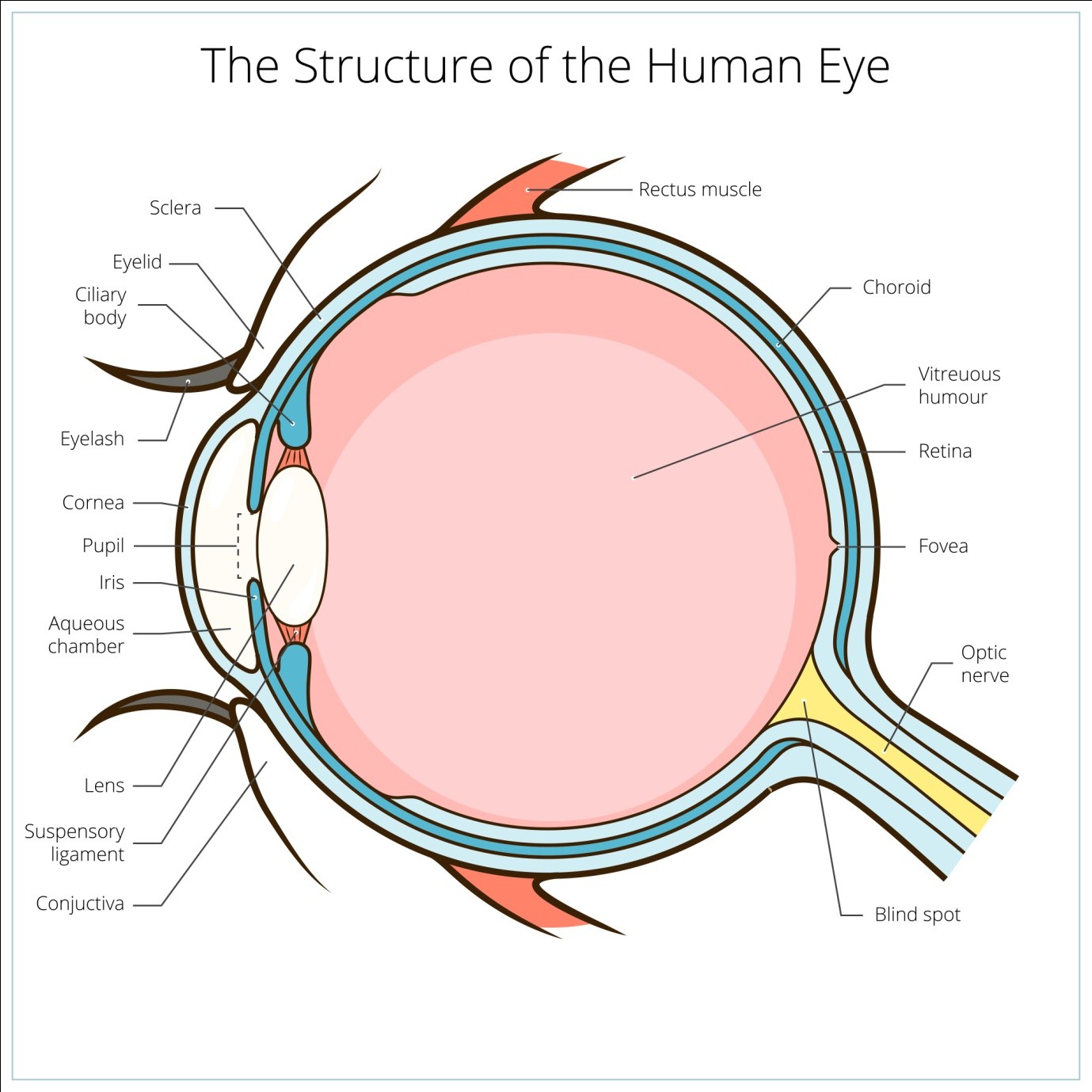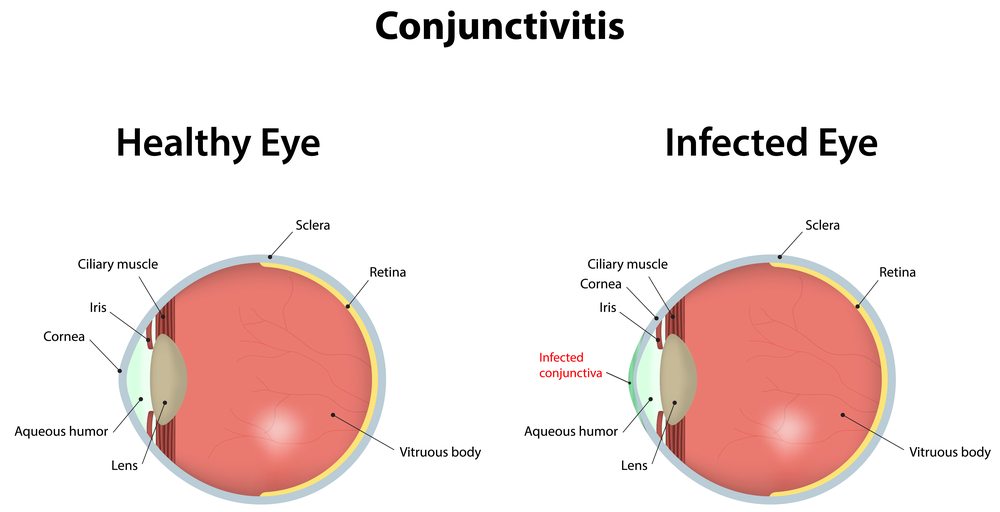Human eyes are one of the most beautiful and striking features on our face. The anatomy of the eye is a fascinating subject to explore.
The eyes are one of the most complex organs of the human body. There are so many different parts of this amazingly designed organ that work together to provide a perfect vision. 
Here is a brief description of the different parts of the eye:
1. Sclera: It is the visible outermost coat of the eye that makes the visible white portion of our eye. It is the part that surrounds the optic nerve present at the back of eyeball. The muscles that help your eyeballs to move around are made up of the sclera.
2. Cornea: It is the part of the eye that faces the light. It is the part of eye that acts as the windows to the light. It allows the passing of light into the eye and permits vision.
3. Iris: This part of the eye provides a brilliant color to the eyes. The color of ring maybe different like black, blue, brown, hazel, green or grey. The amount of light entering the eyes can be controlled by the relaxation and contraction of this iris. This pigmented part of the eye lies between the cornea and lens.
4. Pupil: This is the dark colored round centre of the eye. The pupil is covered by the cornea. The muscles of the iris control the size of the pupil which can dilate or contract depending upon the amount of light. It can control the light going into the eyes that allows the eyesight.
5. Conjunctiva: The outermost layer of the visible part of the eye and the inner surface of the eyelids is lined by conjunctiva.
6. Lens: This is nearly a spherical structure present in the human eye. This lens is located just behind the iris and pupil. It is made up of transparent tissue like structure. It focuses the light on the retina present at the back of the eyeball. It works in association with the ciliary muscles to change the shape of the lenses and hence change the focus of the light.
7. Aqueous humor: It is the fluid present in the front portion of the eye between the iris and the cornea. The main function of aqueous humor is to provide nutrients to the eye cornea and lens. The fluid of this aqueous humor is produced by cilliary muscles.
8. Vitreous humor: It is the clear jelly like part present between the lens and the retina. This clear jelly is called the vitreous humor.
9. Retina: Retina is the portion of the sclera that receives the images formed by the lens and convert those images into such signals that causes the brain to form a vision of the object. Retina sends signal to the brain via the optic nerve.
10. Optic nerve: It is the nerve that carries the electrical signals arising from the retina to the brain and initiates vision. It is that part of eye that act as a carrier of photoreceptive signals.
Also Read: 10 Best food for your eyes
Different ways to protect your eyesight:
The eyes are one of the best parts of our body that work in a complex way to provide us a perfect vision of everything. The eyesight helps us to view different things. You can protect your eyesight by different means like:
1. Take regular eye tests to protect your vision. An eye test helps to determine whether you have an eye ailment or not or whether you are facing an eye problem that is left untreated.
2. Wear protective eyeglasses and goggles when you are working in hazardous places like factories and laboratories. An eye gear during a sport also protects the eye from an injury.
3. The eye needs protection in summers from the harsh sun rays. For that purpose you can wear sunglasses to prevent the UV rays from entering your eyes.
4. Have a balanced diet rich with green vegetables. The fruits, green leafy vegetables and omega 3 fatty acids are good for eyes and they are very helpful in maintaining good eye health.
5. Maintain a healthy weight as it is known to prevent problems such as diabetes and other systemic problems that can give rise to eye sight problems.
6. Avoid smoking too much, as smoking is known to cause cataract. It also damages the optic nerve and causes a condition known as age related macular degeneration.
Also Read: Your computer can wreck your vision



